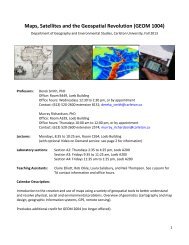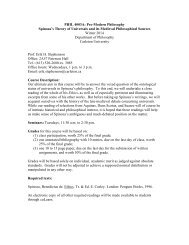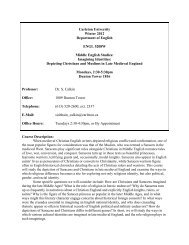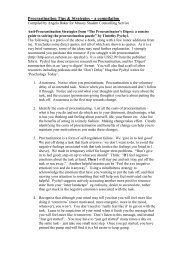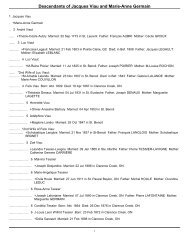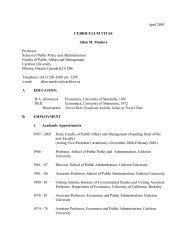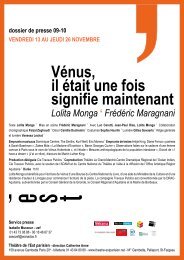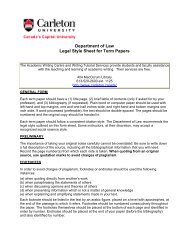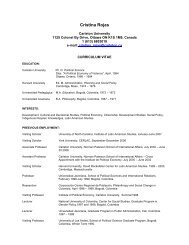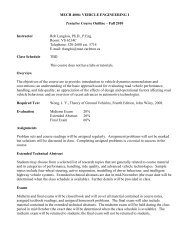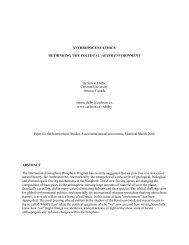Identifying Speculative Bubbles with an Infinite Hidden Markov Model
Identifying Speculative Bubbles with an Infinite Hidden Markov Model
Identifying Speculative Bubbles with an Infinite Hidden Markov Model
You also want an ePaper? Increase the reach of your titles
YUMPU automatically turns print PDFs into web optimized ePapers that Google loves.
4 Empirical Application: Argentina HyperinflationIn this section, we apply the iHMM approach to the money base, exch<strong>an</strong>ge rate <strong>an</strong>d consumerprice in Argentina from J<strong>an</strong>uary 1983 to November 1989. The money base is used as a proxyfor market fundamental <strong>an</strong>d the exch<strong>an</strong>ge rate data series is to capture fundamentally determinedbubble-like behavior. The purpose is to investigate whether there is evidence of bubblebehaviors in the consumer price.These three data series are also examined in HPS <strong>an</strong>d Shi (2010). Both HPS <strong>an</strong>d Shi (2010)conduct a two-regime <strong>Markov</strong>-switching ADF (MSADF) test (<strong>with</strong> different specifications inthe error vari<strong>an</strong>ce) on these three data series <strong>an</strong>d conclude no evidence of bubbles in theconsumer price. The two-regime <strong>Markov</strong>-switching (MS2) models of HPS <strong>an</strong>d Shi (2010) areboth estimated by MLE.As a benchmark, we estimate a MS2 model using the Bayesi<strong>an</strong> approach, which is 16∆y t | s t = j, Y 1,t−1 ∼ N(ϕ j0 + β j y t−1 + ϕ j1 ∆y t−1 + · · · + ϕ j4 ∆y t−4 , σ 2 j ) (18)Pr(s t = j | s t−1 = j) = p jj (19)<strong>with</strong> j = 1, 2. The prior of self-tr<strong>an</strong>sition probabilities p 11 <strong>an</strong>d p 22 is Beta(9, 1) <strong>an</strong>d the priorof (ϕ j , σ j ) is a normal-gamma distribution, namely σ −2jThe prior me<strong>an</strong> <strong>an</strong>d vari<strong>an</strong>ce of precision σ −2j∼ G(1, 1) <strong>an</strong>d ϕ j | σ j ∼ N(0, σ 2 I).are unity. The infinite hidden <strong>Markov</strong> model,(11)-(16) is estimated by setting L = 5 <strong>an</strong>d <strong>with</strong> priors ϕ, H ∼ NW(0, 1, 0.2I, 5), χ ∼ G(1, 1)<strong>an</strong>d ν ∼ Exp(1). 17 We set this prior in order to make the prior parameters of the MS2 modelequal to the me<strong>an</strong> of the hierarchical prior of the iHMM.Figure 2 illustrates the posterior probabilities of β st> 0 (i.e P (β st > 0|Y )) for the logarithmicmoney base, exch<strong>an</strong>ge rate <strong>an</strong>d consumer price. From the MS2 model (dotted line),we c<strong>an</strong> see that the posterior probability exceeds the 0.5 in June 1985 <strong>an</strong>d July 1989 for allthree data series, which suggests the existence of explosive behaviors. Me<strong>an</strong>while, since thespikes appear simult<strong>an</strong>eous in these two periods, the explosive behavior of market fundamentals16 The lag order is the same as that in HPS <strong>an</strong>d Shi (2010).17 Larger Ls produce the same results in bubble detection.14



